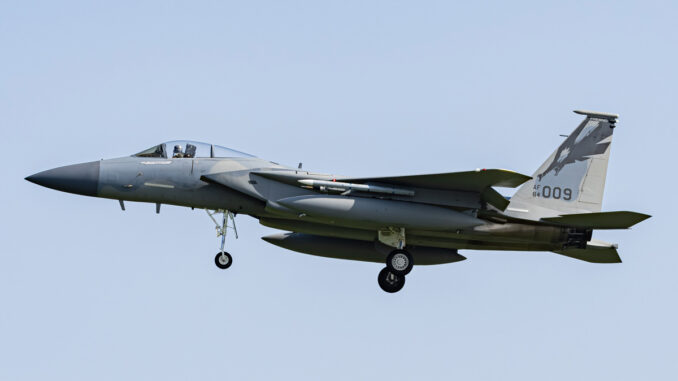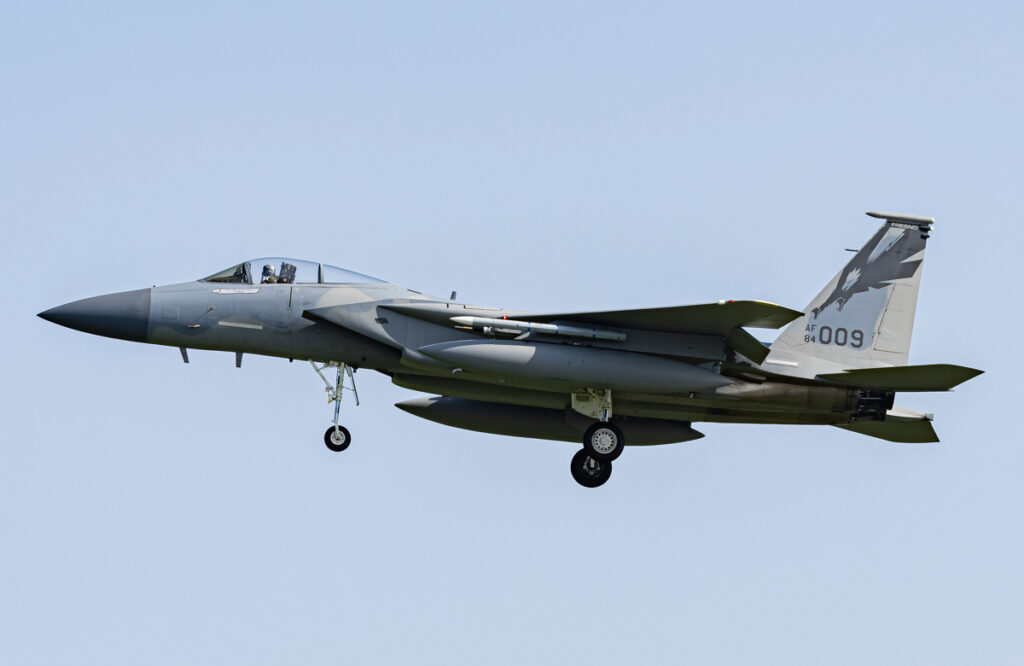
The US Air Force must modernise its ageing fleet to meet today’s threats. Budgetary and technological challenges ahead.
The US Air Force fleet, although composed of advanced aircraft such as the F-22 Raptor and the F-35 Lightning II, is ageing and becoming less effective against modern defence systems, particularly those of China. The Secretary of the Air Force, Frank Kendall, is calling for rapid modernisation, incorporating not only new aircraft, but also electronic warfare and cyber-capability systems. The challenge is daunting, given the high costs and the need to maintain a balanced defence budget.
The current state of the US Air Force fleet
The US Air Force (USAF) has an impressive range of aircraft, including iconic models such as the F-22 Raptor and the F-35 Lightning II. However, a significant proportion of this fleet is ageing, with aircraft such as the F-15 Eagle and F-16 Fighting Falcon still accounting for a large proportion of the air force. These aircraft, although effective in their day, are no longer suited to modern conflicts in the face of advanced air defence systems, particularly those deployed by countries such as China.
For example, the F-15, introduced in the 1970s, and the F-16, which entered service in the 1980s, are now outmatched by the surface-to-air missile (SAM) systems and fifth-generation fighters possessed by some potential adversaries. Modernising these aircraft would require considerable investment to improve their radar capabilities, stealth and weapons systems, which may not be economically viable compared with acquiring new aircraft.
The challenges of modernisation
The Secretary of the Air Force, Frank Kendall, insists on the need to rapidly modernise the fleet to meet emerging threats. This modernisation is not limited to the purchase of new aircraft, but also includes the integration of advanced systems such as electronic warfare, battle management, intelligence capabilities and cyber capabilities.
However, these technological improvements come at a high cost. At present, the US defence budget is around $900 billion a year (around €822 billion), with a substantial share devoted to the Air Force. Despite this colossal budget, modernising the entire fleet represents a major financial challenge. By comparison, China, the second largest country in terms of military spending, invests less than $300 billion a year (around €274 billion), or around a third of US spending.

The urgency of the situation
Calls for modernisation of the USAF are not just prudent precautions, but a response to the rapidly evolving defence capabilities of potential adversaries. Modern air defence systems, such as those deployed by China, pose a significant threat to the fourth generation aircraft that make up the bulk of the US fleet. To operate effectively in a sophisticated air defence environment, the USAF needs aircraft capable of avoiding detection and overcoming advanced radar and SAM systems.
The fifth-generation F-22 Raptor and F-35 Lightning II meet these needs with their advanced stealth, data fusion and interconnectivity capabilities. However, they represent a minority of the current fleet. The retirement programme for ageing aircraft, including the retirement of 310 aircraft by 2024, is a crucial step towards modernisation, although these retirements are politically sensitive and may result in local job losses.
Solutions envisaged
To meet these challenges, the USAF must adopt an integrated approach to modernisation. This includes not only replacing old aircraft with new ones, but also integrating advanced technologies in the fields of electronic warfare and cyber capabilities. For example, the development of new battle management and intelligence systems can compensate for some of the limitations of older aircraft.
In addition, initiatives such as the acquisition of new aircraft models like the B-21 Raider, a strategic stealth bomber currently under development, and the Next Generation Air Dominance (NGAD) programme, aimed at developing sixth generation fighters, are essential to ensure that the USAF remains at the forefront of air technology.
Consequences for US defence
Modernising the USAF has profound implications for US national security. By improving its air capabilities, the United States can maintain air superiority against potential adversaries and ensure effective defence of its national interests. In addition, a modernised fleet is crucial to support the overall operations of the US armed forces, particularly in areas of conflict where air superiority is essential.
However, these modernisation efforts must be balanced with budgetary constraints. Policy-makers will need to navigate between modernisation requirements and economic realities to ensure that the USAF remains ready to meet the challenges of the future while managing available resources effectively.
Modernisation of the US Air Force fleet is an urgent necessity to meet current and future threats. The financial and technological challenges are considerable, but the solutions envisaged, including the integration of advanced technologies and the development of new aircraft, are crucial steps in ensuring the air superiority of the United States.
War Wings Daily is an independant magazine.